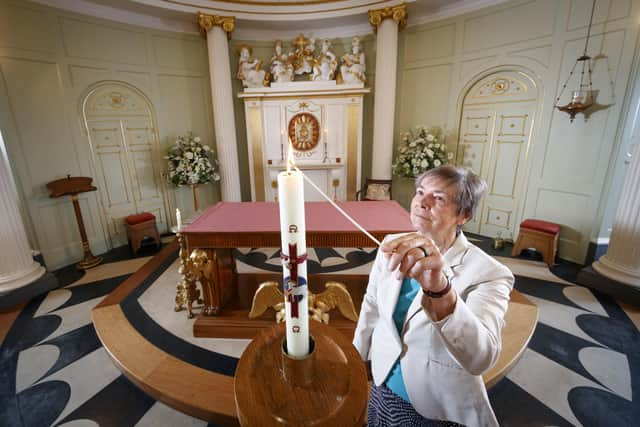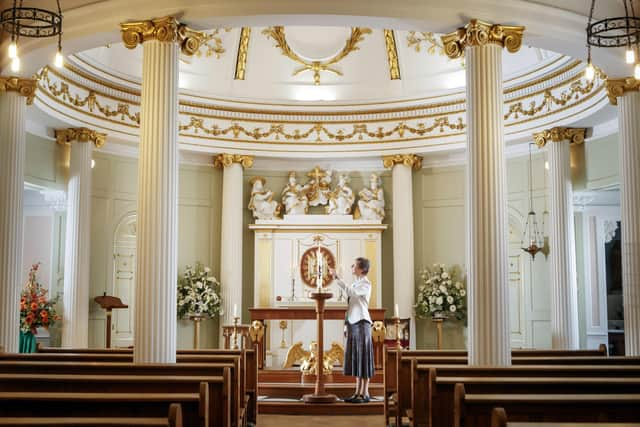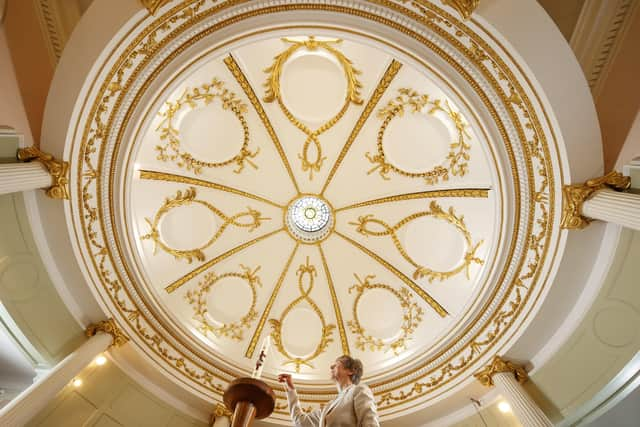This hidden chapel outside the city walls may be York’s best-kept secret
The 18th century chapel within England’s oldest living convent, just outside Micklegate Bar and across the road from the Premier Inn, is one of the best-kept secrets in York.
Designed to get out of in a hurry, rather than in to, it bears silent witness to a time when to worship as a Catholic was punishable by death.
Advertisement
Hide AdAdvertisement
Hide AdThe domed chapel is encased within the Bar Convent, which is still run by the order of nuns who founded it during the English Reformation. The signs outside give away its existence now, but inside it remains concealed by its architecture.


“You could walk past it without noticing it was there. It was built to blend in – that was the whole point,” said Lauren Masterman, the convent’s volunteers manager. “It’s very well known in Catholic communities but less so elsewhere.”
The building reopens to visitors next Tuesday, having been closed since March, and those inside hope it will herald its discovery by a new generation.
“It has played a significant role in the history of York, in support of women’s education in the UK,” said Sister Frances Orchard, provincial superior of the Congregation of Jesus Trust. “Many are fascinated and surprised by what they read and see inside.”
Advertisement
Hide AdAdvertisement
Hide AdThe chapel, with some 20 rows of pews, is one of the finest examples of its kind in Europe, having been created by Thomas Atkinson, the architect also partly responsible for the Archbishop of York’s official residence at Bishopthorpe Palace.


The land on which it stands had been purchased by Frances Bedingfield, one of 12 sisters who came to York from Norfolk in the 17th century. She signed the deed under an alias, and the “Ladies of the Bar” who lived and worked there wore dull slate-coloured gowns to match the plain roof which concealed the elaborate chapel dome.
“They had to pretend to be widows and they set it up as secret school,” Ms Masterman said.
The women continued to worship despite the ban on their religion, and the building – with its priest hole and eight doorways designed by Atkinson for a quick escape in the event of a raid – is a shrine to their faith.
Advertisement
Hide AdAdvertisement
Hide AdThe convent also houses the relic of the Yorkshire martyr St Margaret Clitherow, the so-called “Pearl of York”, who was pressed to death for refusing to plead to the charge of harbouring Catholic priests. This year marks the 50th anniversary of her canonisation by Pope Paul VI.


The building has been at different times a hospital ward, a refuge and, during the Second World War, a bomb-site after air raids killed five nuns and demolished the East Wing. The classrooms which originally formed part of the convent are now the lower site of All Saints School, whose main building is south of the city.
The Bar Convent was created in 1686 by sisters of the Congregation of Jesus, an open order founded by the women’s education pioneer, Mary Ward.
Born to a devout Catholic family in Yorkshire, three of whose members were involved in the Gunpowder Plot, she was determined to found a new religious order and educate women, but faced opposition and persecution. Following her death in 1645, her companions founded the convent to continue her work.
Support The Yorkshire Post and become a subscriber today.
Advertisement
Hide AdAdvertisement
Hide AdYour subscription will help us to continue to bring quality news to the people of Yorkshire. In return, you’ll see fewer ads on site, get free access to our app and receive exclusive members-only offers.
So, please – if you can – pay for our work. Just £5 per month is the starting point. If you think that which we are trying to achieve is worth more, you can pay us what you think we are worth. By doing so, you will be investing in something that is becoming increasingly rare. Independent journalism that cares less about right and left and more about right and wrong. Journalism you can trust.
Thank you
James Mitchinson
Comment Guidelines
National World encourages reader discussion on our stories. User feedback, insights and back-and-forth exchanges add a rich layer of context to reporting. Please review our Community Guidelines before commenting.